I heard a rumor that some of you lovely readers want to know how to stock a low carb kitchen and what a sane / low carb / KETO pantry, ‘fridge and freezer look like. And, you want pictures. I can see how this could be a frightening prospect to some cooks, but I have what I like to think of as a tidy – albeit rather complicated – mind. I think my therapist may have another term for it, but let’s keep going with the tidy mind concept. My kitchen cupboards reflect this. Well, the tidy part at least. They are definitely not complicated. A little unorthodox, perhaps. Complicated, no.
You’ll notice I do not like packets very much. Or cans. Or boxes. I do like glass storage jars. Matching ones. It makes things remarkably easy to find; and let’s face it – we’d all rather I spend my time making up new recipes than scrabbling around trying to locate the flax seed or the dried cranberries. I admit I also have a bit of a thing for my labeling machine. I like to think that I’ll remember what all those different white powdery things are, but the reality is that labels make life much simpler, and I am all about a simpler life.
Writing this reminds me of the time my cousins from England showed up in Seattle, hungry from an Alaskan cruise. Yes, I realize that “Alaskan cruise” and “hungry” is a bit of an oxymoron, but I promise it’s a true story. They all piled into my kitchen looking for something to eat, then threw open every cupboard before exclaiming, “Where’s the food???!!” Which is a very interesting question when the contents of the cupboards look like this.
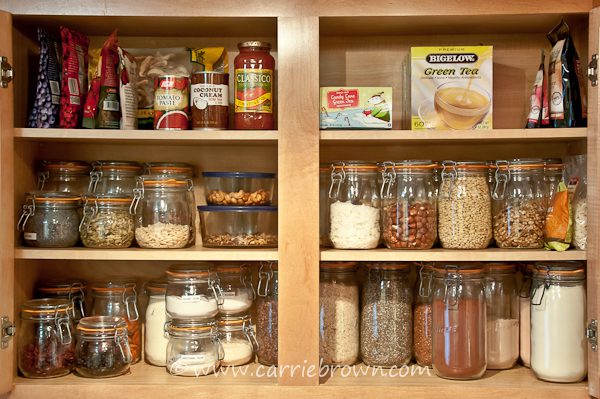
Because, as you can see – my cupboard is full of food. You know real food. Whole food. Food that used to live on a tree or a bush. I can only assume that they were looking for packets and boxes and cans filled with something else. Something that merely resembled food. Edible products. Sad.
My cousins also photographed my cutlery drawer, because they wanted to immortalize the fact that there was someone on planet earth who kept their cutlery drawer so ridiculously tidy. Another true story is that I once dated a man based on the tidiness of his cutlery drawer. Many, many years of therapy later, I no longer use that as a dating criteria. Oh. Wait. I no longer have a dating criteria – I haven’t dated in 9 years. I am certain that cats are so much easier than husbands and children. Hey, how we got from people wanting to know what my pantry looks like to my dating habits I am not entirely sure, but let’s get back to the food. It’s way more interesting.
Here’s a list of the things that I stock my kitchen with. Keeping these staples on hand makes it super-easy to rustle up a healthy meal or snack at a moments notice. The ones that are hyper-linked will take you to a page where they are explained more fully and tell you where you can get them if they are new to you.
I can’t stress enough how removing all the carbage out of your kitchen will help you *enormously* in getting and staying on track. When the munchies strike you’ll eat what’s there because getting up, getting dressed and driving to the store to get carbage is going to seem like a whole bunch of work that you don’t want to do. Be prepared and you’re half way there.
So here’s how to stock a low carb kitchen. Your life is about to get simpler and easier, as are your trips to the grocery store.
How to stock a low carb kitchen: Fridge
Dairy
- Butter: salted / unsalted – read all about butter
- Cottage cheese
- Cheese – preferably imported from Europe (way better quality and not full of hormones or other things we were not intended to ingest)
- Cheese (unsweetened): Parmesan / mozzarella / ricotta / goats / feta – imported from Europe and check for starchy fillers in pre-shredded or pre-crumbled cheeses
- Cream cheese
- Ghee
- Greek yogurt
- Heavy (double) cream
- Sour cream
Non-dairy
- BBQ Sauce – get the recipe!
- Berries
- Eggs
- Fermented veggies
- Fish, smoked
- Flaxseed, ground
- Hemp seed, ground
- Hot and Nutty Cereal mix – get the recipe!
- Lemon juice
- Lemon curd – get the recipe!
- Lime juice
- Mayonnaise, unsweetened
- Meat: roast chicken and turkey slices / bacon / Trader Joe’s Pork Belly
- Milks, unsweetened: Coconut / almond / hemp / sunflower (in cartons)
- Nut butters: Almond / peanut
- Shirataki noodles
- Stocks: chicken / vegetable (clear)
- Veggies – read where to store your veggies
How to stock a low carb kitchen: Freezer
Nuts (I keep a jar in the kitchen and store the rest in the freezer to keep them fresh longer)
- Almonds: whole / blanched / slivered / flaked / flour (ground) / meal
- Brazils
- Cashews
- Hazelnuts
- Macadamia
- Peanuts
- Pecans
- Pine nuts
- Pistachios
- Walnuts
Fruit / Vegetables
- Blackberries
- Blueberries
- Cauliflower, riced
- Mixed berries
- Raspberries
- Strawberries
Meat / Fish
- Beef: ground / steaks / fatty cuts – look for grass-fed
- Bison: ground / burgers / steaks
- Chicken: breasts / tenders / thighs – all skin-on
- Duck: thighs / breasts / whole – all skin-on
- Lamb: chops / ground / leg
- Pork: chops / bacon / bacon ends / belly
- Prawns
- Salmon: fillets / burgers
- Sausages: chicken / turkey / pork / beef – no fillers or grains
- Turkey: fillets / breast / ground / burgers
How to stock a low carb kitchen: Pantry
- Almond flour
- Almond meal
- Apricots, dried unsweetened
- Avocado oil
- Blueberries, dried unsweetened
- Chia seeds
- Cocoa nibs
- Cocoa powder, unsweetened
- Coconut cream, canned unsweetened
- Coconut flour, unsweetened
- Coconut oil
- Coconut oil spray
- Coconut, unsweetened – shredded, desiccated
- Cranberries, dried unsweetened
- Dried herbs
- Extracts: vanilla / peppermint / lemon / orange / almond / a bunch of others
- Flax seed meal
- Fish, canned: salmon, tuna, sardines, kippers, clams
- Green tea, bags
- Guar Gum
- Herbal teas: peppermint / whatever flavor floats your boat
- Jerky: beef / turkey / pork / bacon – check for sugar / carb content as many most?!) jerkys are loaded with them
- Konjac Flour (glucomannan powder)
- Xylitol
- Olive oil, extra virgin
- Pork rinds
- Pumpkin seeds
- Raisins
- Spices: cinnamon / ginger / cloves / nutmeg / pumpkin pie spice / a bunch of others
- Sunflower seeds: raw / roasted
- Tomato sauce and paste – look for brands with no added sugar
- Vinegars – white wine / red wine / champagne / sherry
- Whey powder – vanilla / chocolate / strawberry
- Xanthan Gum
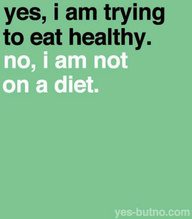
So there you have it – how to stock a low carb kitchen.

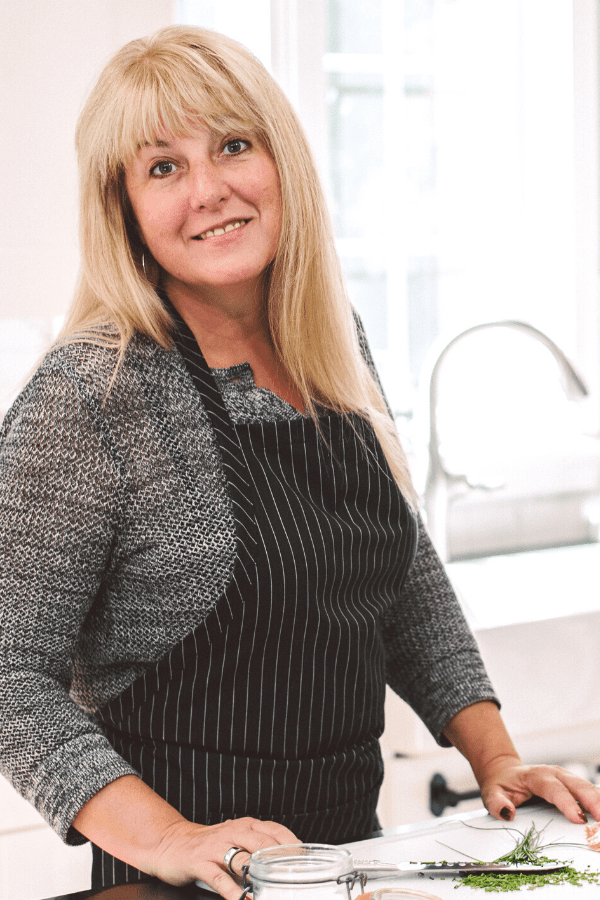

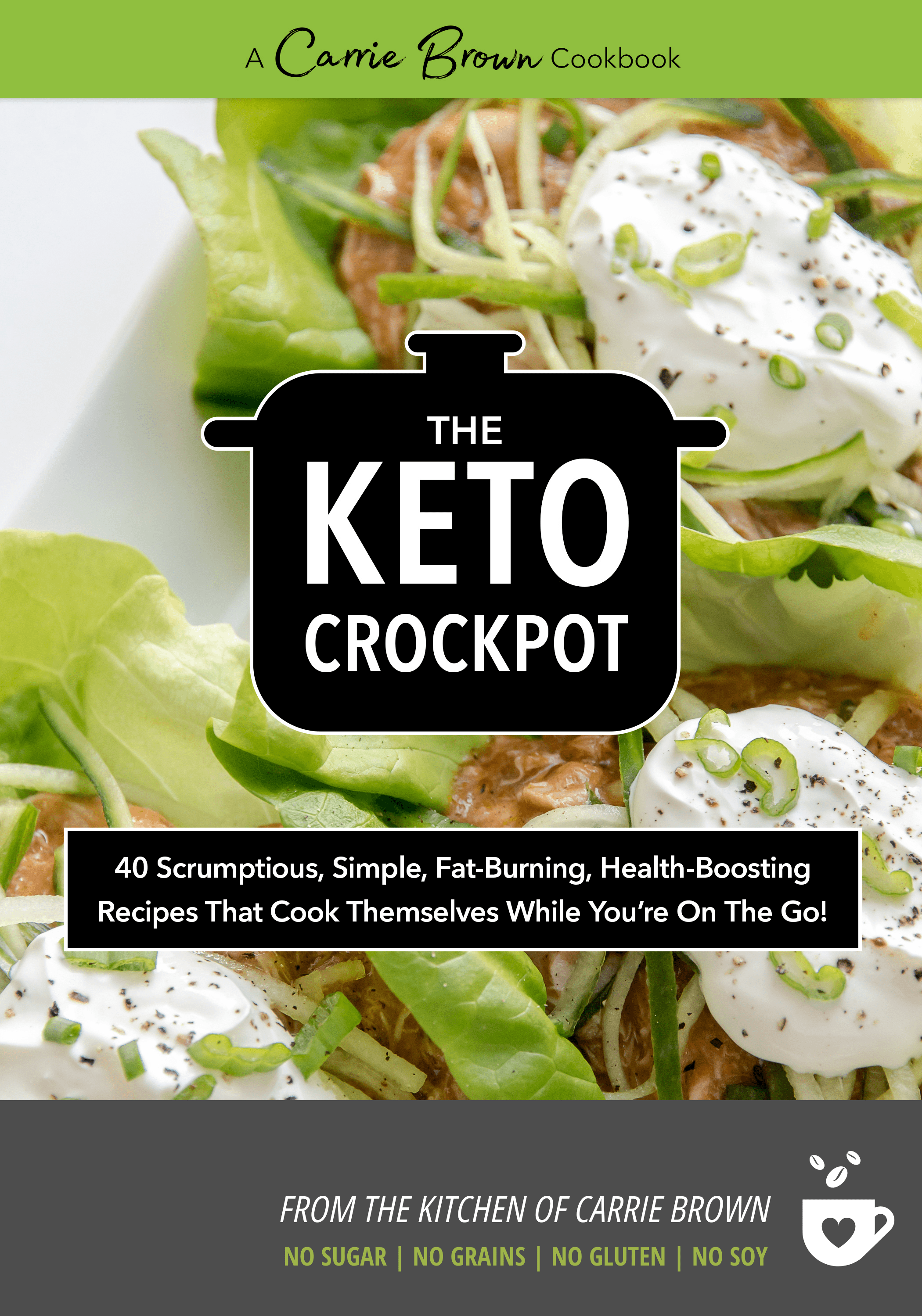
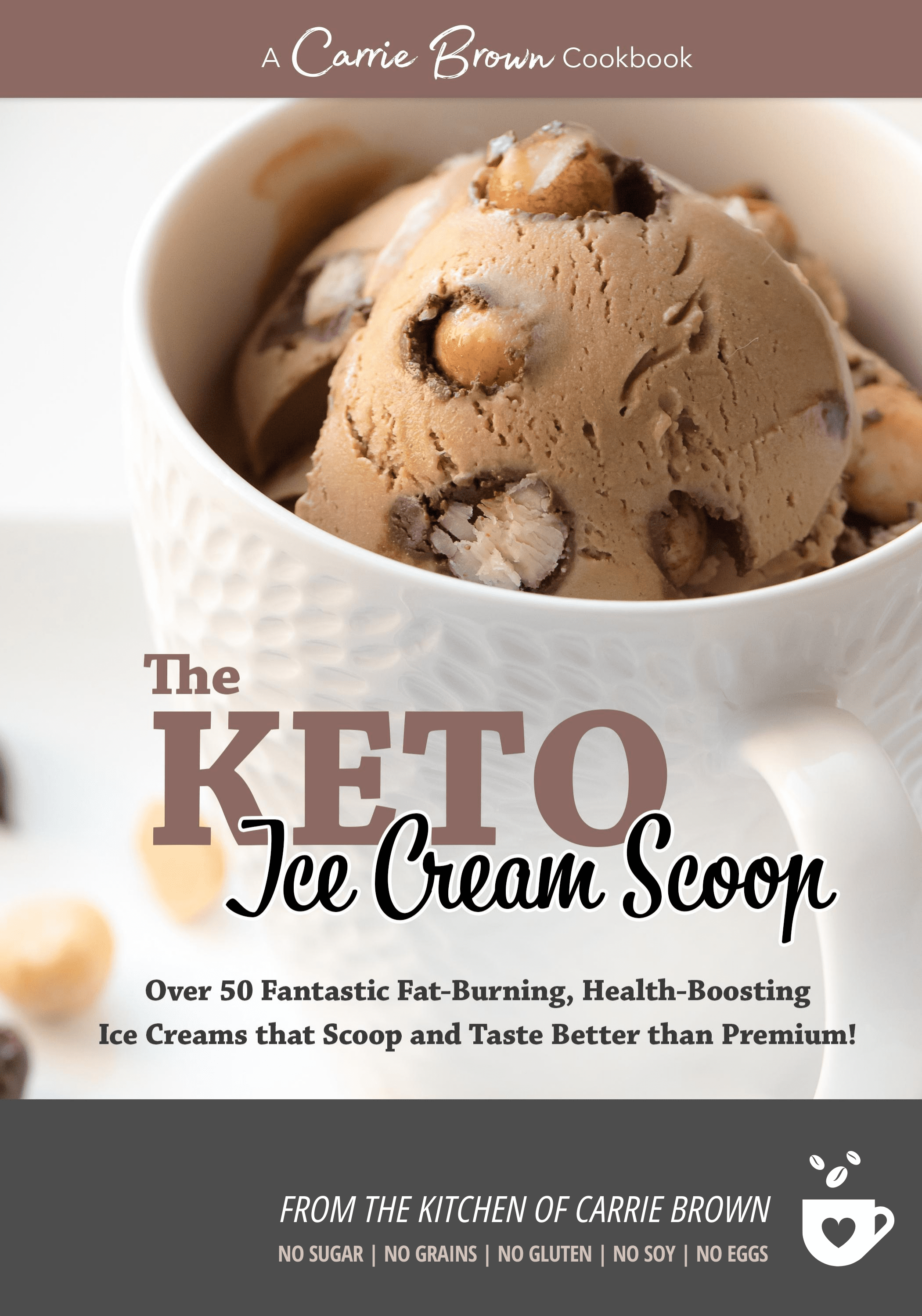
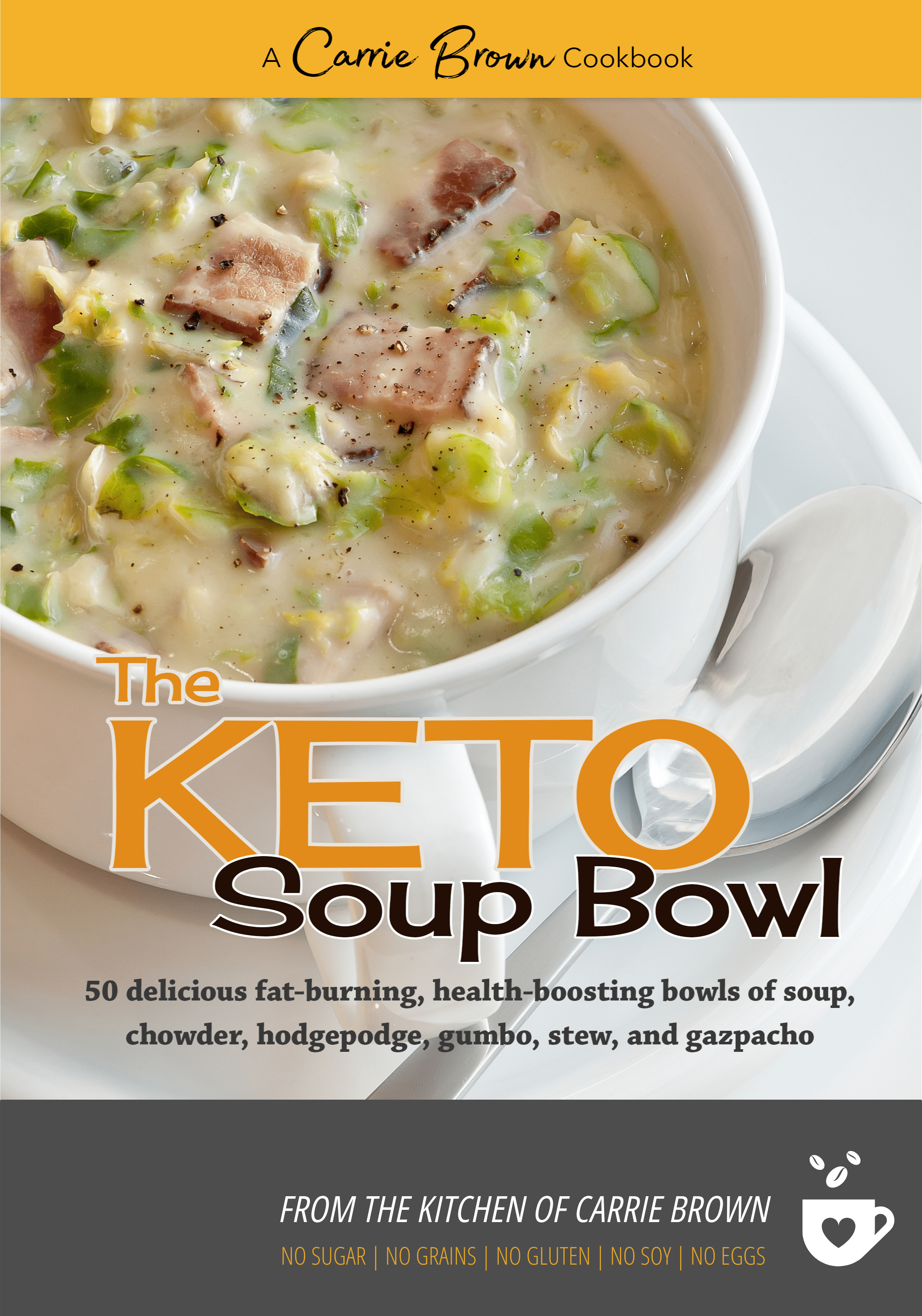
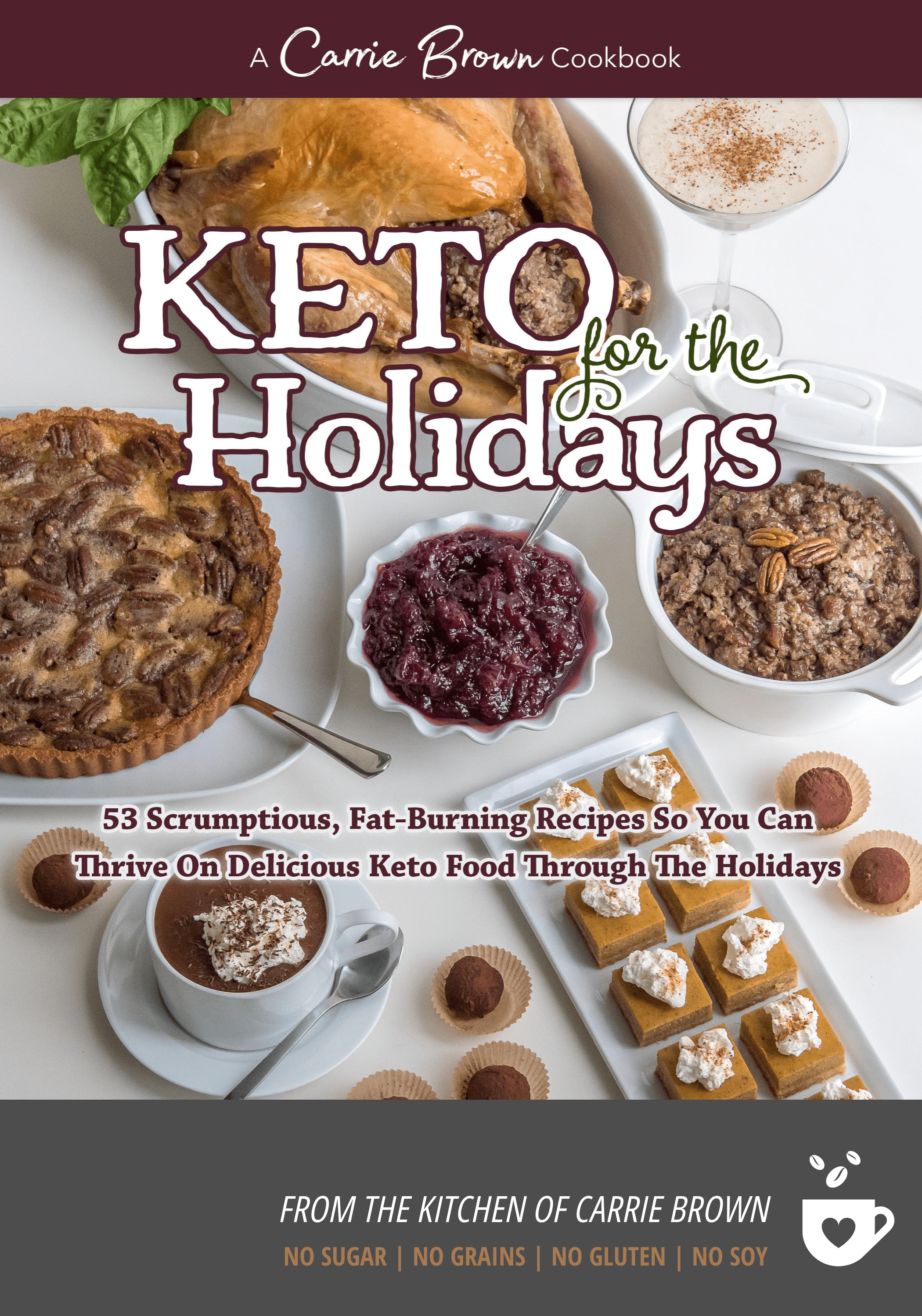








Mark HarrisThis is a fab article thank you.
What I could do with big time is a book (ideally) that outlines what to have for breakfast (with recipes and pictures), lunch and dinner, all with pictures and recipes. To be honest when I think of eating the kinds of foods written about and in fact when I’ve had a go I feel very unsatisfied, I miss the sauces, rice and noodles…yet the evolutionary argument is very hard to argue against….again thanks for a fab article really liked it.
carrieThanks, Mark!! So glad that you found it useful. Before the book comes out, you can find breakfasts here: https://carriebrown.com/archives/category/food/sane/breakfasts dinners here: https://carriebrown.com/archives/category/food/sane/dinner-meals smoothies here: https://carriebrown.com/archives/category/food/sane/smoothies lunches here: https://carriebrown.com/archives/category/food/sane/lunch and you can use the navigation on the left hand side to find further categories. Hope that helps!
HeidiI live in the NW and where do you find unsweented dried fruit that is on your list above? I looked at Trader Joes yesterday and my local grocery store and they all had added sugar.
And your thoughts on Sugar Free Syrups? Are they SANE? I am trying to cut out sugar or sugar replacements. I use the syrups in my coffee but I am trying to cut back becuase I thought they were not SANE? I use just one pump for my large coffee travel cup which is down from 2 pumps. So I am doing better. But again trying to cut them out because I thought they were garbage for you.
Where do you get Mayonnaise, unsweetened? What brand do you buy? And regular not low fat or all the new kinds with Olive Oil or Canola Oil or the Smart Balance brands?
Thank You for all that you do for all of us,
Heidi
carrieHeidi – will get back to you on email – lots to answer here!
JennyI’m wondering about low fat and fat-free dairy… I know that they are described in this diet as the right choices, but it doesn’t make sense to me: When fat is reduced or removed from dairy, other things {unhealthy additives} are put in to give back some of the creaminess and flavor. Fillers are almost never a good thing. Also, the processing is heavy, and we want less processed food. So why not eat whole, grass-fed, natural dairy in moderation versus eating synthetic, highly manufactured “fat free” versions?
carrieJenny – very much depends on the brands you buy, for example, there are no other added ingredients in Trader Joe’s non-fat Greek yogurt over their full-fat version. We tend to use low or non-fat versions not because they are lower in fat but because they are higher in protein. Depending on the amount of other healthy fats in your diet, you may choose the full-fat versions over the non-fat. Then you would just need to make sure you get the extra protein elsewhwere. Hope that helps!
NancyCurious about the Shirataki noodles and the Konjac flour?????
carrieAh ha, Nancy! You noticed. Darn. I haven’t done recipes with these yet. Coming soon!
KatieI am having trouble finding the konjac flour. Was wondering where u get it or if there is a substitution for it?
Laurence HinksonI bought mine on Amazon.Hope it helps.
Leanda KayessThanks Carrie!
MichelleDo I spy Crio Bru in your pantry? That’s a staple in mine! Not many people know about it.
carrieYes, Michelle! Well spotted 🙂
JeanneWine? Do you use it in cooking? Can I live SANE and still drink some in moderation?
carrieHi Jeanne, I use wine here and there in cooking. I don’t drink alcohol at all – but that was the case long before I went SANE. I would say it depends on where you are starting from and what your goals are as to how much wine you want to consume, since, being made from grapes it quite high in sugars. If you have a long way to go on your journey then I would stay away until your metabolism is healed and you are burning fat well. Hope that helps!
BarbaraDear Carrie
I love this article – and your recipes – the whole site actually! Thank you Will be purchasing the books soon!
Laurence HinksonHi, I am like you I prefer glass containers than plastic. I have bought some Konjac flour and Guar gum and they came in a platic container. I was wondering, if I transfer them in a glass pot, will that alter the taste or texture or discolour the product?
Thanks
Laurence
Keto Survival Kits: Planning to Thrive, not Survive - The Real Carrie Brown[…] tips on your home pantry, check out this post. Also check out our Ingredients Guide and Equipment […]